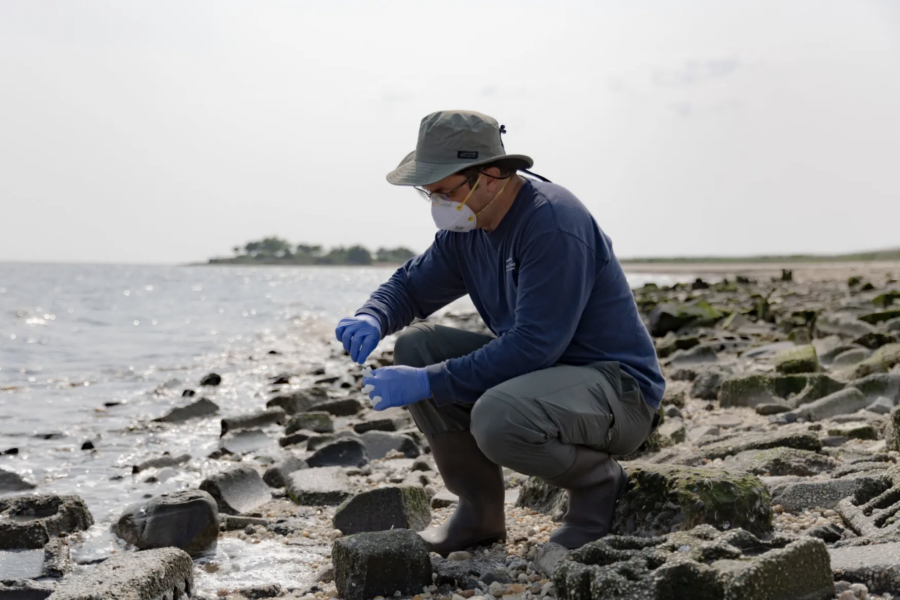NYT The H5N1 virus poses “a great unknown threat” to birds and humans alike. Understanding and thwarting it begins with excrement collection.
It was a glorious day for field work on the shores of the Delaware Bay. The late afternoon sun cast a warm glow over the gently sloping beach. The receding tide revealed a smattering of shells. The dune grasses rustled in the breeze. The beach vines were in bloom. And the bird droppings were fresh and plentiful.
“Here’s one,” said Pamela McKenzie, a researcher at St. Jude Children’s Research Hospital in Memphis, pointing a gloved finger at one tiny white splotch and then another. “There’s one, there’s one, there’s one.”
For the next two hours, Dr. McKenzie and her colleagues crept along the shore, scooping up avian excrement. Their goal: to stay a step ahead of bird flu, a group of avian-adapted viruses that experts have long worried could evolve to spread easily among humans and potentially set off the next pandemic.
Every spring, this part of southern New Jersey becomes a bird-flu hot spot. Shorebirds winging their way north alight on local beaches to rest and refuel, excreting virus along the way. And every year for the last four decades, scientists from St. Jude have flown into town to pick up after them. The work requires patience — waiting for the movements of the birds and the movements of the tides to align — keen eyes and resilient knees, sturdy enough to withstand hours of shuffling and squatting along the sometimes rugged shorelines. “They’re not nice, sandy beaches,” said Lisa Kercher, a member of the St. Jude team. “They’re thick, muddy, icky beaches that are full of bird poop.”
But these dropping-covered shores are helping scientists learn more about how avian influenza evolves, how it behaves in the wild and what it might take for these bird viruses to become a global public health threat. These scientific questions, which have driven the St. Jude team for decades, have become even more urgent as the United States grapples with its largest bird flu outbreak in history, caused by a new, highly pathogenic version of a virus known as H5N1.
“Delaware Bay has turned into an influenza gold mine,” said Robert Webster, the St. Jude influenza expert who first discovered the hot spot in 1985. He has been back, or his colleagues have, every year since. “And we will continue to mine that gold mine until we’ve found the answers.”
